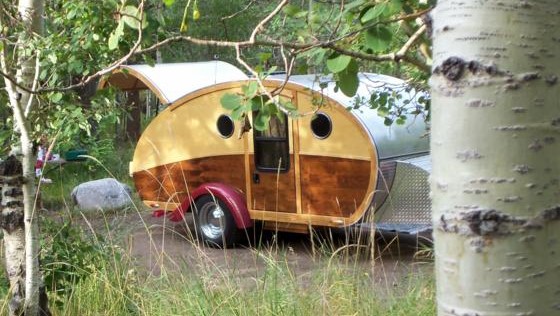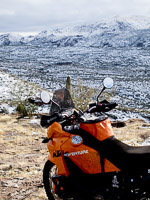The Geek's Lair
Re: The Geek's Lair
Geekfisher,
My plans came out of the design library in the top header, It is a modified 2&2 High.
Link to my build.... http://www.tnttt.com/viewtopic.php?t=28640
In my opinion, the only chance you have for a 1000# trailer is a full Foamie and a support structure for the roof tent.
Try to think/design along the lines of an aircraft, not a tank. I know, easier said then done.
My plans came out of the design library in the top header, It is a modified 2&2 High.
Link to my build.... http://www.tnttt.com/viewtopic.php?t=28640
In my opinion, the only chance you have for a 1000# trailer is a full Foamie and a support structure for the roof tent.
Try to think/design along the lines of an aircraft, not a tank. I know, easier said then done.
Wolfgang

-

Wolfgang92025 - Lifetime member
- Posts: 1098
- Images: 660
- Joined: Fri Apr 18, 2008 10:16 pm
- Location: Salt Lake City area, Utah
Re: The Geek's Lair
GeekFisher wrote:KTM_Guy wrote:My cross members are a mix of 2X2 X1/8 angle and 1X2 12 gage tube. That space in the middle is where future water tank will be. Abour 30 gallons. Centered over the axle.
Size your roof spars for your insulation. The roof rack typically mount to the side wall. Make sure you have solid backing to have something to screw into. A stud should be under the backing down to the floor. Did you say how you are building your walls? Stick built or skeleton method ?
If you are wanting to be 1,000-1,2000 pounds finished weight for a trailer that size you need to thinking “ultralight” ALL THE TIME. Instead of using 3/4” wood ask yourself can I use 1/2” or 1/4”. Weight adds up fast.
Todd
I expect to use 1-1/2 thick Isoclad stuff (foam with air barrier) for everything except maybe the floor so 2x2 made sense when I designed. I don't know the difference between skeleton and stick build. I thought about going kinda house-like, studs every 16in centers (when possible...) with studs where the partition wall will be since I plan on insulating this wall but not the galley walls as it doesnt need it. Roof spars would be cantilevered on the side walls if that makes sense (it might not, in the end...)
I don't want to use anything thicker than 1/4" for plywoods. Here is where I am so far:
- 1/4 outside and 1/8 inside for sidewalls.
I used 1/4 both inside and out. 1/8" isn't much if you have to attach things like hooks to the wall. Try to pre think stuff like that and add backer.- 1/8 at the very bottom and 1/4 on inside floor
I did 1/8" top and bottom. Nest time I will do 1/4" bottom and still 1/8" top side. I'm thinking something on the road or trail could damage the 1/8 more so 1/4". You don't walk on the floor and the mattress spreads and distributes the weight.- 1/8 roof and ceiling
I did the same.
I built using the skeleton method, you build the wall skeleton just putting wood where it is needed. Cut insolation to fit.
Then add any wiring and backing, and the inside skin and the outside skin to create a wall panel. The wall is epoxied on the outside and the inside wall is varnished before it is put up on the floor. If you don't know about the inside out method of building you should check into it because it really makes it easier to build. Build you walls, then the floor, put walls on floor. Then build out the inside, after the inside is done the ceiling get installed already varnished or painted. then the roof spars, wiring, insolation, and finally the roof. If done right you don't have to keep climbing in and out the cabin through the door. And you don't have to varnish in a small space. If you look at my build you can see I put up one wall and then installed all my cabinet that were pre made before I put up the second wall. The other thing I did that I saw on on Tony's build is to not build on the frame but on a 2X4 frame on casters. It made it so easy to work on the roof and to get in and out to work on the inside.
-

KTM_Guy - 500 Club
- Posts: 571
- Images: 193
- Joined: Sun Mar 05, 2017 7:50 am
- Location: Mesa, AZ near Usery



 .... In actuality, an elastomeric roof coating is your best bet. They are 2-3x more expensive, though. If you go with a cheaper asphalt emulsion roof coating, you might wind up with hairline cracks in your first coat after a year or two, but it's not hard to touch up with a second coat.
.... In actuality, an elastomeric roof coating is your best bet. They are 2-3x more expensive, though. If you go with a cheaper asphalt emulsion roof coating, you might wind up with hairline cracks in your first coat after a year or two, but it's not hard to touch up with a second coat. to me it’s cheap insurance.
to me it’s cheap insurance.